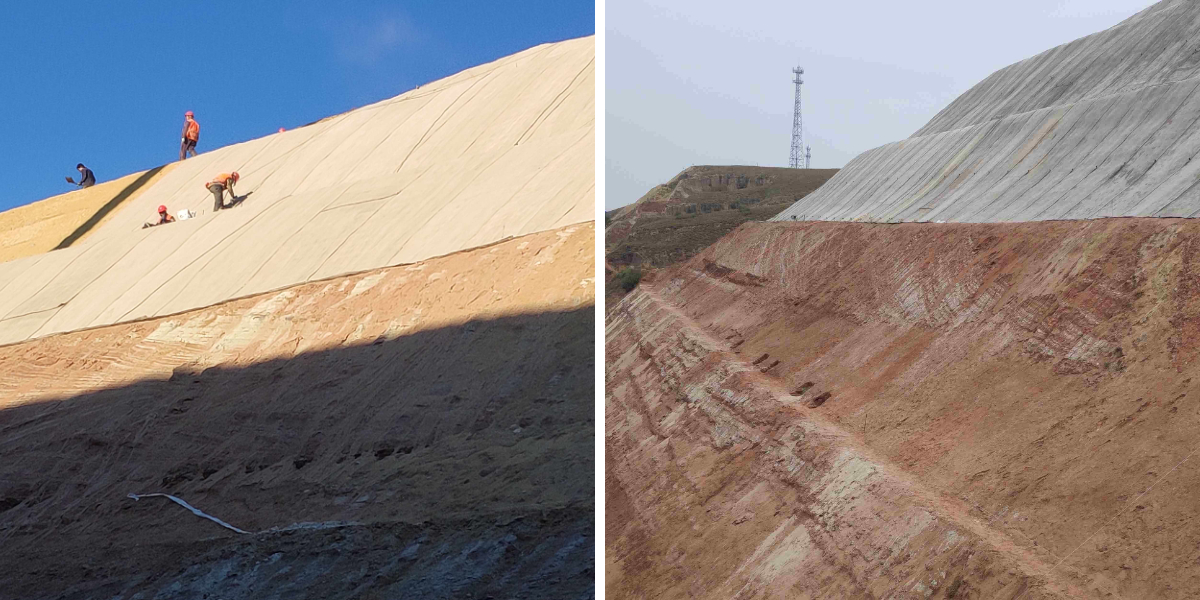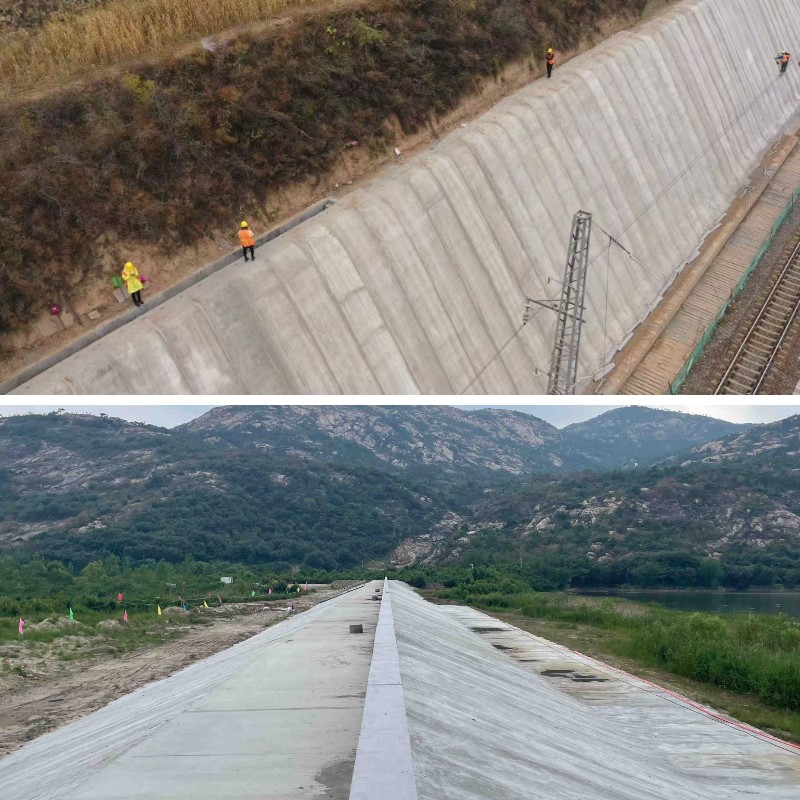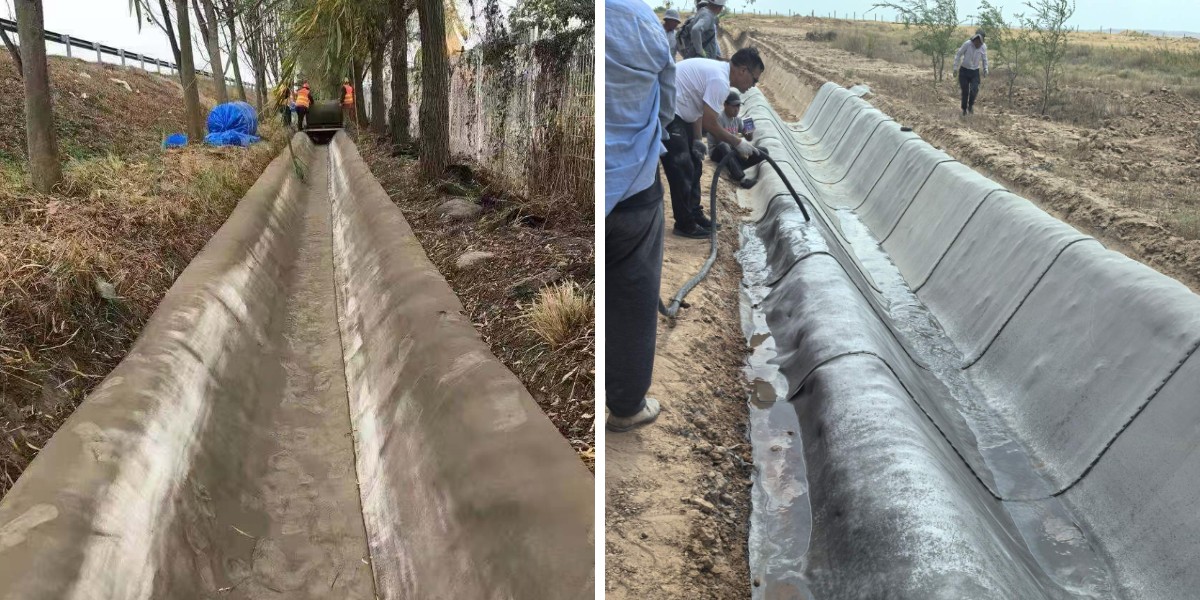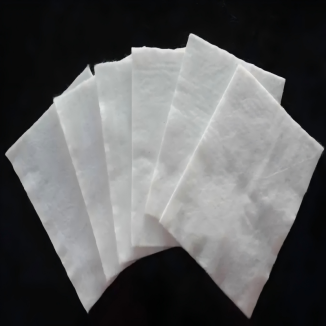Cement Blanket Watering Tips: Ensuring Full Curing for Maximum Strength (With Dos & Don’ts)
Cement blanket—also recognised as Concrete Cloth —is a game-changing fabric for quick, long lasting development tasks like drainage ditches, conserving walls, or emergency repairs. Unlike typical concrete, it arrives pre-impregnated with dry cement, activating solely when watered. But here’s the catch: perfect watering isn’t simply “adding moisture”—it’s the key to full curing, which unlocks the cement blanket’s most power (up to forty MPa, comparable to popular concrete). Do it wrong, and you’ll stop up with a brittle, vulnerable shape that cracks or fails early. This article breaks down four crucial watering tips, plus quintessential dos and don’ts, to make sure your Concrete Cloth treatment plans perfectly.
1. Timing of Watering: Start Early, Avoid Delays to Activate Cement
The second you unroll and role the cement blanket, the clock starts offevolved ticking. Watering timing immediately influences how nicely the cement particles hydrate—too late, and the cement will “set” upfront except bonding fully.
1.1 Water Immediately After Installation (Within 15–30 Minutes)
As quickly as your cement blanket is laid flat (and secured, if on slopes), begin watering. The dry cement inner the canvas wants instantaneous moisture to commence hydration—the chemical response that hardens the material. Waiting longer than 30 minutes, mainly in heat or windy weather, can reason the pinnacle layer of cement to dry out. This creates a “crust” that traps unhydrated cement inside, main to uneven curing and vulnerable spots. For massive projects, work in sections: water one area proper after laying it, then pass to the next—don’t wait to water the complete location at once.
1.2 Never Water After Initial Set (Typically 2–4 Hours Post-Installation)
Every cement blanket has an “initial set” time—usually two to four hours after first watering—when the cement hardens sufficient to withstand mild pressure. Watering after this factor does extra damage than good: it can wash away unhydrated cement from the surface, or create extra moisture that receives trapped, inflicting bubbles or cracking as the fabric dries. If you leave out the preliminary watering window (e.g., due to surprising delays), do no longer add extra water—contact the producer for guidance, as the Concrete Cloth may additionally need replacement.
1.3 Adjust Timing for Cool or Humid Weather
In cool (below 15°C/59°F) or humid conditions, the cement blanket’s hydration slows down. You can lengthen the preliminary watering window to 45–60 minutes, however don’t pass it entirely. Even in damp air, the canvas won’t take in ample moisture from the surroundings to therapy fully—you nevertheless want to follow centered water to make certain the cement internal prompts uniformly.
2. Water Volume & Frequency: Balance Is Key to Avoid Over/Under-Watering
More water isn’t higher for cement blanket—over-watering dilutes cement, while under-watering leaves it under-hydrated. The intention is to hold the Concrete Cloth constantly moist (but now not soaking wet) for the first 7 days, when most of the electricity develops.
2.1 Calculate the Right Volume: 2–3 Liters per Square Meter (for Standard 10mm-Thick Blankets)
A trendy cement blanket (10mm thick) wants two to three liters of water per rectangular meter to totally prompt the cement. For thicker blankets (15mm or 20mm), expand the extent via 0.5–1 liter per rectangular meter—thicker cloth has extra dry cement that wants hydration. To measure, use a watering can with quantity markings: for a 5m x 2m (10㎡) blanket, you’ll want 20–30 liters total. Pour slowly, letting the water soak in as an alternative than run off—you’ll comprehend it’s ample when the canvas turns a uniform darkish grey (no light, dry patches left).
2.2 Frequency: Water Every 2–4 Hours in the First 24 Hours, Then Reduce
The first 24 hours are indispensable for hydration—water your cement blanket each and every two to four hours. After that, decrease frequency to as soon as or twice a day for the subsequent 6 days. Why? In the early stages, the cement is swiftly hydrating and dropping moisture; regularly occurring mild watering maintains it moist barring overwhelming it. After day 3, the fabric begins hardening, so it wants much less general water—just adequate to forestall floor drying and cracking. By day 7, the Concrete Cloth will have reached 70–80% of its most strength, and you can cease watering (unless in excessive drought).
2.3 Don’t Guess—Look for Dry Spots
If you’re not sure if you’re watering enough, take a look at for mild grey or white patches on the cement blanket—these are dry areas the place hydration isn’t happening. Spot-water these areas without delay with a spray bottle to keep away from weakening the structure. Conversely, if water swimming pools on pinnacle for greater than 10 minutes, you’ve over-watered—let it drain earlier than the subsequent watering, as standing water can wash away cement fines.
3. Watering Methods: Choose Tools That Protect the Cement Blanket’s Structure
The device you use to water matters—harsh strategies can injury the Concrete Cloth ’s floor or displace the cement inside. Stick to gentle, focused techniques to hold the fabric intact whilst making sure even moisture.
3.1 Use a Spray Nozzle or Watering Can (Gentle Flow Only)
For most projects, a backyard spray nozzle set to “mist” or “shower” mode is ideal. The quality water droplets evenly coat the cement blanket except 冲刷 (scrubbing) the surface. A watering can with a rose (the perforated head) works too—especially for small or unique areas (like edges or corners). Both tools let you manipulate the flow, so you can center of attention on dry spots besides over-saturating others. Avoid pouring water without delay from a bucket—this creates heavy streams that can wash away cement from the canvas’s pinnacle layer, leaving it skinny and weak.
3.2 For Large Areas, Use Drip Irrigation (Long-Term Curing)
If you’re working with a giant cement blanket (e.g., a 50m drainage ditch), a drip irrigation machine is a time-saver. Lay drip strains alongside the size of the canvas, set to a sluggish drip (1–2 liters per hour). This continues the cloth constantly moist except guide effort, which is integral for tasks the place you can’t water more than one instances a day. Just make positive the drip strains are positioned at once on the cement blanket (not on the floor beside it) to make certain the water soaks into the material, no longer the soil below.
3.3 Never Use a High-Pressure Washer
High-pressure washers are a huge “no” for cement blanket. The severe water movement (even on low settings) can punch holes in the Concrete Cloth , displace the cement inside, or erode the surface. Even if you’re making an attempt to easy the blanket, wait till it’s completely cured (after day 7) and use a tender brush with water—never stress wash throughout curing.
4. Adjust Watering for Extreme Environments: Beat Heat, Rain, and Slopes
Cement blanket curing doesn’t appear in a best world—extreme climate (heat, rain) or elaborate web sites (slopes) require tweaks to your watering movements to preserve the Concrete Cloth strong.
4.1 High Heat/Drought (Above 30°C/86°F): Increase Frequency + Cover to Retain Moisture
In hot, dry weather, moisture evaporates from the cement blanket fast—you can also want to water each 1–2 hours in the first 24 hours. To sluggish evaporation, cowl the canvas with a light-weight geotextile or burlap after watering. The cowl traps moisture, lowering how frequently you want to water and stopping the floor from drying out too quickly. Avoid watering all through the freshest phase of the day (12–3 PM)—instead, water in the early morning or late afternoon to reduce evaporation.
4.2 Rainy/Wet Weather: Reduce Watering + Improve Drainage
Too a good deal rain can over-water the cement blanket, main to susceptible curing. If it’s drizzling (less than 5mm of rain per hour), ignore watering—let the rain do the work, however take a look at for pooling water (use a broom to sweep extra water off slopes). If it’s pouring, cowl the canvas with a water-resistant tarp to stop over-saturation. Make certain the web site has true drainage too—dig small trenches around the cement blanket to channel rainwater away, as standing water can seep into the base and weaken the bond between the canvas and the ground.
4.3 Slopes/Vertical Surfaces: Slow Watering + Prevent Runoff
Water runs off slopes quickly, so watering a cement blanket on a hill requires patience. Start at the pinnacle of the slope and water slowly, letting the water soak in earlier than transferring down. Use a spray bottle for the pinnacle edge—this prevents heavy water from speeding down and stripping the canvas. For vertical surfaces (e.g., holding walls), use a sponge or fabric to dab water onto the cement blanket—this ensures the cloth absorbs moisture except dripping off. You may also want to water slopes 2–3 instances greater frequently than flat areas, as runoff capability much less water stays in the canvas.
Conclusion: Master Watering for a Strong, Durable Cement Blanket
Proper watering turns a easy cement blanket into a long-lasting structure—by getting the timing proper (water right now after installation), balancing quantity and frequency (2–3L/㎡, familiar early on), the use of mild strategies (spray nozzles, drip lines), and adjusting for excessive prerequisites (cover in heat, drain in rain), you’ll make sure full curing and most strength. Remember the golden rule: preserve the Concrete Cloth constantly moist (not moist or dry) for 7 days, and keep away from harsh equipment or delays.
If you’re planning a precise challenge (like a slope restore or drainage ditch) and want tailor-made guidance, I can create a custom cement blanket watering schedule—it will consist of project-specific volume, frequency, and device suggestions to take the guesswork out of curing. Would you like this schedule?
Contact Us
Company Name: Shandong Chuangwei New Materials Co., LTD
Contact Person :Jaden Sylvan
Contact Number :+86 19305485668
WhatsApp:+86 19305485668
Enterprise Email: cggeosynthetics@gmail.com
Enterprise Address: Entrepreneurship Park, Dayue District, Tai 'an City,
Shandong Province










